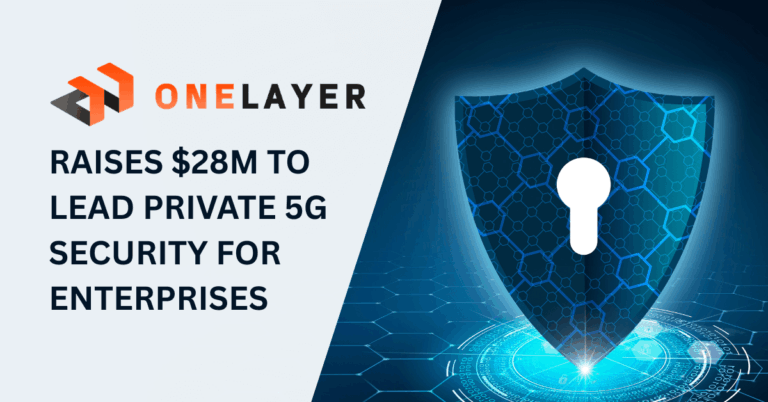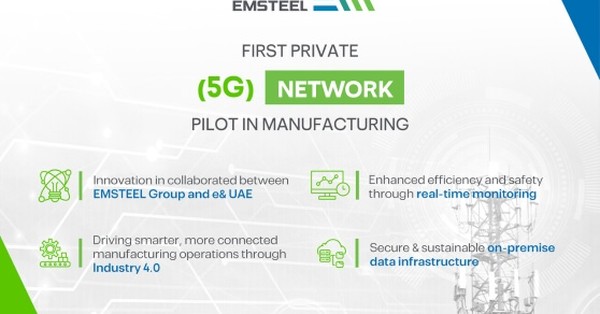OneLayer, the Boston-based leader in private 5G network security, has closed a $28 million Series A round in what sources describe as a highly competitive and oversubscribed funding process. The round brings the company’s total funding to more than $43 million as enterprises rapidly adopt private cellular networks for critical operations.
The timing reflects explosive market demand that’s outpacing the industry’s ability to deliver simple, secure solutions. While private 5G promises transformational capabilities for manufacturing, utilities, and critical infrastructure, enterprises are struggling with device visibility, security gaps, and operational complexity that didn’t exist with traditional IT networks.
OneLayer has cracked this code by translating complex cellular technology into familiar enterprise IT language, eliminating the need for specialized cellular expertise. The numbers tell a compelling growth story: OneLayer achieved 6X revenue growth last year and 3X growth this year, backed by a strong customer pipeline extending through 2026.
The company’s platform now manages private cellular deployments spanning 122,000 square miles for major utilities, supports Fortune 100 manufacturers scaling from pilot programs to comprehensive multi-site rollouts, and has expanded internationally with major wins in Latin American mining operations.
What makes this particularly newsworthy is the market timing. Private cellular networks are evolving from carrier-grade infrastructure to enterprise-managed networks, creating a massive opportunity for companies that can bridge the gap between telecommunications complexity and enterprise IT simplicity. OneLayer appears to be winning this race, with partnerships across the entire ecosystem from Nokia and Ericsson to Palo Alto Networks and Fortinet.
Securing the Next Wave of Private 5G: An Interview with OneLayer CEO Dave Mor
Following the announcement, TeckNexus spoke with Dave Mor, CEO and Co-Founder of OneLayer, to unpack what this milestone means for the broader private 5G ecosystem. In this interview, Hema Kadia explores how OneLayer is redefining network security for industrial and mission-critical environments, the signals behind its oversubscribed Series A, and what comes next as enterprises move from pilot deployments to large-scale, production-grade private networks.
OneLayer’s $28M Series A and Vision for Scalable 5G Security
Hema Kadia (TeckNexus): Congratulations on the Series A, Dave. What does this milestone mean for OneLayer’s mission, and how do you see it shaping the private 5G security landscape?
Dave Mor (OneLayer): Thank you. This funding is a strong validation of our vision to make private networks and 5G as secure and manageable as enterprise IT. The private cellular revolution is real, but without visibility, trust, and interoperability, adoption stalls. OneLayer is bridging that gap. This round allows us to accelerate product innovation and global expansion, helping enterprises adopt private networks confidently, securely, and at scale.
Hema Kadia (TeckNexus): The round was described as “oversubscribed.” What signals from customers or investors do you think drove that level of confidence?
Dave Mor (OneLayer): The oversubscription came from a clear market signal, enterprises are moving fast to connect critical operations, but they need a security foundation that understands both telecom and IT. Our 6× revenue growth and expansion across sectors proved that OneLayer isn’t just an idea; it’s a necessity. Investors saw customers scaling with us, not experimenting, and that gave them confidence that we’re defining this category.
Enterprise 5G Adoption Accelerates with OneLayer’s Secure Connectivity
Hema Kadia (TeckNexus): You’ve seen rapid adoption — 6× revenue growth last year and a major manufacturer scaling from pilot programs to multi-site rollouts. What’s driving that momentum, and what use cases stand out?
Dave Mor (OneLayer): Enterprises are realizing they can’t rely on traditional security models for cellular networks. What’s driving growth is the ability to bring OT connectivity under the same security and management umbrella as IT. In manufacturing, for example, we’re enabling visibility and control over every connected machine, from sensors to autonomous vehicles, all within a zero-trust framework. Once customers see that simplicity and scalability, they expand quickly.
Hema Kadia (TeckNexus): Utilities like SouthernLinc are managing massive footprints. How are they using OneLayer to secure such large private networks, and what challenges are unique to that scale?
Dave Mor (OneLayer): Utilities operate some of the most distributed and critical networks in the world, thousands of sites, countless connected devices, and no room for error. At that scale, the biggest challenge isn’t just securing the network; it’s securing every device the moment it connects. OneLayer enables utilities like Evergy to automate secure device onboarding, ensuring that every sensor, gateway, and controller is verified and segmented instantly, without manual configuration. Once onboarded, our platform provides unified visibility and dynamic policy enforcement across the entire network. That combination, frictionless onboarding, continuous monitoring, and automated segmentation, is what allows these organizations to scale private networks securely and efficiently, even across massive, mission-critical footprints.
How OneLayer’s Architecture Secures Private 5G for Industrial Networks
Hema Kadia (TeckNexus): How does OneLayer’s architecture differ from traditional IT or OT security when applied to 5G environments?
Dave Mor (OneLayer): Traditional IT security assumes predictable endpoints and stable IP networks. Private 5G is dynamic, devices connect, move, and communicate in new ways. OneLayer’s architecture is built natively for that world. We identify, segment, and secure devices based on network behavior and identity rather than static IPs. It’s zero trust, but adapted for the fluid, high-speed nature of cellular connectivity.
Hema Kadia (TeckNexus): Many enterprises are integrating network slicing and zero-trust models — how does your solution make those concepts practical for industrial customers?
Dave Mor (OneLayer): Network slicing and zero trust are powerful ideas, but they’re complex to operationalize. We simplify them by translating telecom concepts into IT language. Security teams can define policies in familiar terms (identity, role, risk) while we enforce them at the cellular layer. The result is end-to-end control that works across vendors, slices, and even public networks.
What’s Next for OneLayer: Global Expansion and AI-Driven 5G Security
Hema Kadia (TeckNexus): Looking ahead, where do you see the biggest opportunities for OneLayer in 2026 — new verticals, geographies, or product capabilities?
Dave Mor (OneLayer): The biggest opportunity is helping enterprises unlock the full potential of private and hybrid cellular. We’re expanding deeper into manufacturing, logistics, and energy industries, where secure connectivity directly impacts productivity and safety. Geographically, we’re growing our footprint in North America, Europe, and APAC as adoption accelerates. On the product side, our focus is on AI-driven automation and interoperability, networks that secure and optimize themselves.








































